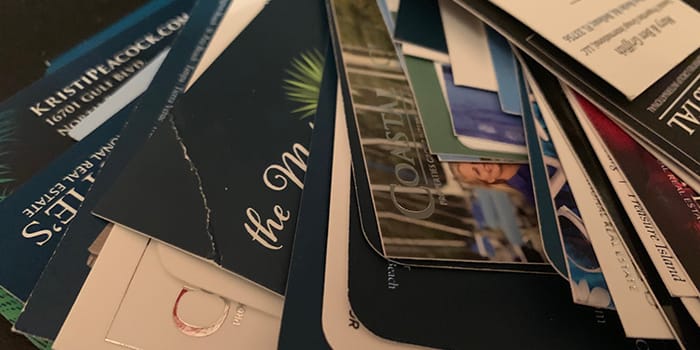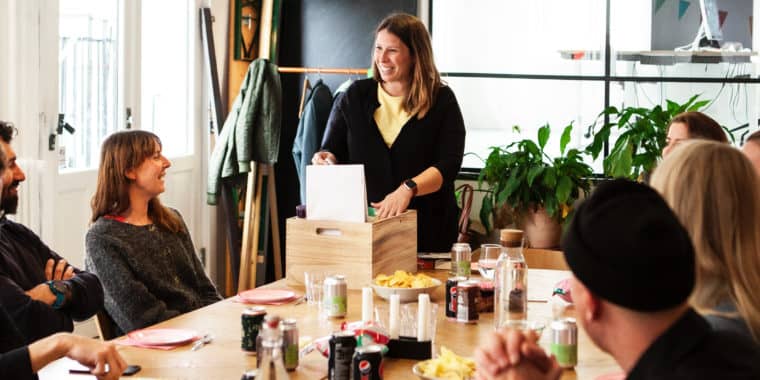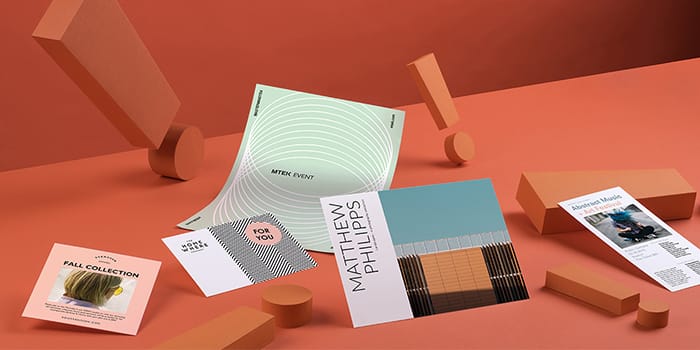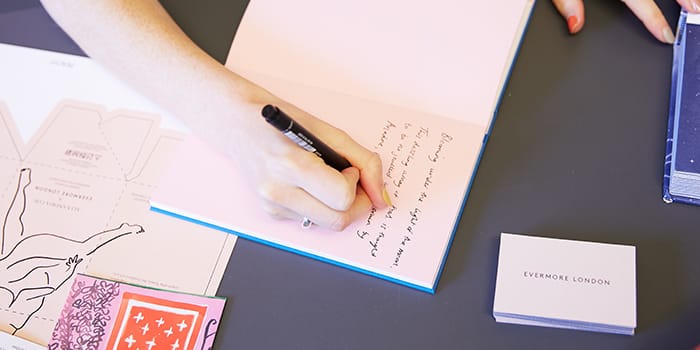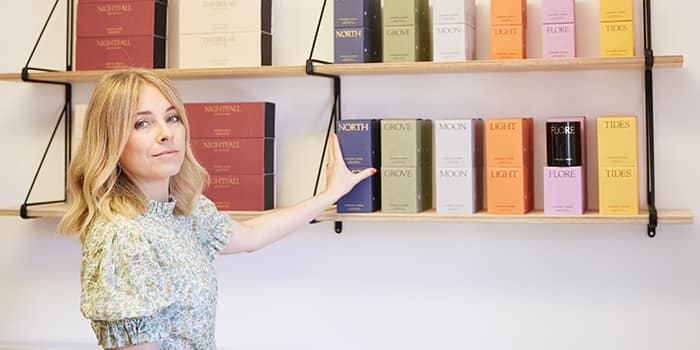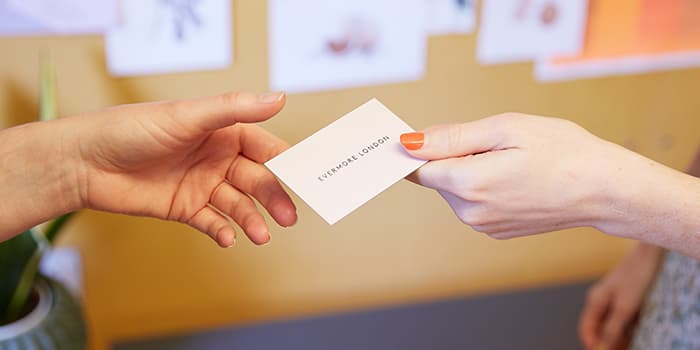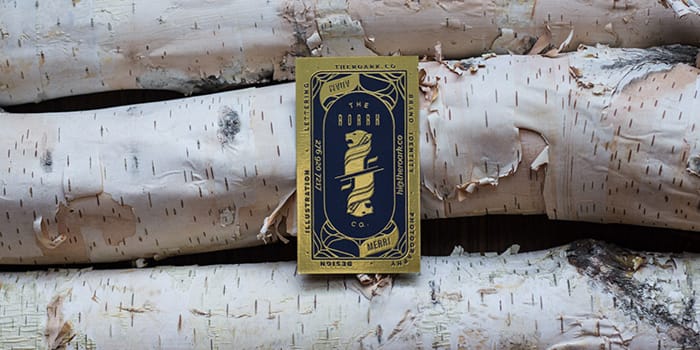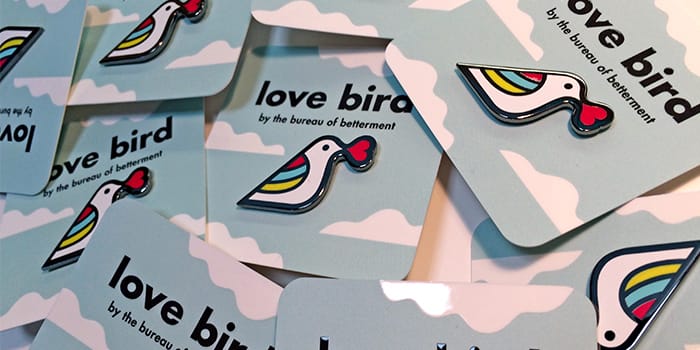How to get the most out of real estate conference and networking events

With hundreds of Real Estate conferences to choose from each year, it’s crucial to get the most out of the few you have the chance to attend. Katie Lance, CEO of Katie Lance Consulting, has been recognized by Inman News as one of the 100 most influential people in real estate and is a featured keynote speaker at many industry events. Katie provides insight into how to get the most out of conferences by sharing the tips and tricks she has accumulated over her career.
In real estate – there are so many conferences, conventions and events you could attend. Once you decide to invest the time and money away from your business – how can you make the most out of each event? Here are a few of my tried and true tips for maximizing real estate events!

Photo by The Climate Reality Project on Unsplash
Plan ahead, but don’t overschedule. Think about the 5-10 people you really want to meet with and try to get those meetups scheduled with those people ahead of time. Exchange cell phone numbers if they are comfortable doing so, in case you have a hard time finding one another for your meeting. If they are not comfortable, most people have email on their mobile phones, so that route works as well in case you need to get in touch!
Look at the conference program ahead of time. Block off time in your calendar for the must-attend sessions. If the conference has an event app, download the mobile app in advance and take some time to go through it. Some apps have the capabilities to add a session directly to your calendar for you!
With that being said, don’t schedule every minute of the day – there is nothing wrong with free-time to meander through the exhibit area, or to wander through the lobby. You never know who you might bump into! From my experience, the best conversations at conferences are the ones you didn’t expect to happen.
Be prepared. Bring the items that will set you up for success – and only those items. I always double check my bag for chargers, my laptop or notebook and my business cards. I recommend 20-25 business cards for networking and any exhibitor booth giveaways!
Bring a portable phone charger/battery if you have them to stay mobile and not tethered to an outlet. Otherwise, be sure to bring the cord AND wall adapter for your chargers. Many times, conferences will have USB chargers, but others you might be limited to what is provided in the structure of the event space!
If you are more of a notepad and pen person, bring those. Also, make sure the bag you are carrying is comfortable sensible. Overall, carry what makes the most sense for you to do business. Be sure to leave some room in your bag for swag!
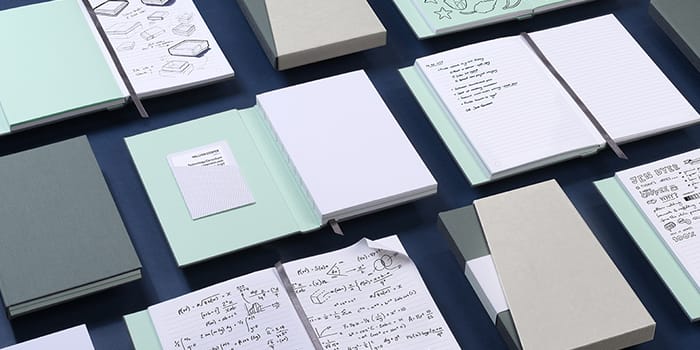
Look your best. No need for a ball gown or a tux, but what do you wear that makes you feel like a million bucks? Wear that. Exception -don’t forget comfy shoes. Conferences are not the best time to break in those brand new leather shoes you just bought. Your feet will thank you at the end of the conference, when you had a few pairs of comfy shoes that you didn’t mind walking the exhibit floor and being in for 12 hours!
Plan to eat or bring snacks. Either plan meals with friends and colleagues or bring snacks to eat quickly as needed. Don’t forget to hydrate too especially if you will be on stage! Many event spaces have water bottle refill stations – so bring your own reusable Water Bottle so you don’t run the risk of having to pay for one.
Get your office, team and family ready. While it is nearly impossible to put your responsibilities on hold while you attend a conference, there are a few things you can do to make sure you can be as present and focused as possible.
Set up an out of office that appropriately sets the expectations of the person receiving it. Planning on checking emails only at night? Just say so! Let them know when they can expect a reply from you. However, emergencies happen, so always provide a method of contacting you that is reserved solely for emergencies. That way when you open your email and see URGENT you know what needs to be addressed first.
Since you have already looked through the schedule and picked the sessions that are a ‘must’, share that schedule with your family and co-workers. That way they know when the best time to call is if they really need to get in touch with you.
Network with purpose. Conferences and networking events are always super exciting with the prospect of all the potential business connections. With that said, it’s important to be present in each of your conversations so you can dedicate all your energy. Otherwise, you might miss out on some great conversation if you are thinking about who you want to talk to next and nothing is worse than having a conversation with someone and thinking they are not paying attention!
Network efficiently
You could very well walk out of a conference with dozens of cards, but how will you remember all the conversations you had? I suggest jotting down 1-3 bullets on the back on each card with a few words to remember each conversation. That way, if you intend to follow up later, so you don’t have to worry about going solely off your memory.
I have been ordering my business cards through MOO for years – and practically every time I hand someone my card, they complement how it looks or feels. First impressions count!
Get creative with what you hand people. Perhaps instead of a business card you hand out stickers (who doesn’t love stickers right?) It could be of your logo or something fun related to your brand. I love to hand out inspirational quote stickers I create using MOO. They are in my brand colors – so still on brand but they are fun and creative. They are a great conversation starter!

Designed by Katie Lance, Printed by MOO
.
Say yes to new opportunities. Someone invites you to a party you hadn’t planned on, say ‘yes.’ Someone invites you to dinner with people who haven’t met yet, say ‘yes.’ Conferences are the perfect place to get out of your comfort zone and say ‘yes’ to meeting new people. Just don’t lose the balance between saying ‘yes’ and hitting snooze four times the next morning and missing the first session!
Get connected on social media before, during and after the event. Take part in the Facebook group and follow the hashtag on Twitter and Instagram. One of the best ways to feel like you are a part of a big event is to jump into the conversation on social media. If you are new to an event and don’t know anyone – don’t hesitate to put a message out there that you are new. I know you’ll have lots of veteran attendees welcoming you with open arms.
After the event, follow up right away. On your way home, follow up with people you met right away through social media, like LinkedIn and/or email. Follow up while it is still fresh in your mind – and theirs! You will come back with tons of ideas, pick one you can implement right away and start there.
I would love to hear from you – let me know what you think about this post. Do you agree or disagree? Message me over on Facebook or Instagram!
Katie Lance is the author of #GetSocialSmart and founder and CEO of Katie Lance Consulting, a social media strategy firm. She’s been recognized by Inman News as one of the 100 most influential people in real estate and is a featured keynote speaker at many industry events. Her #GetSocialSmart Academy features on-demand social media education to help real estate professionals take their social media strategy to the next level.
Interested in learning more about MOO and how we can support your Real Estate business? Complete the form here and we will reach out to you shortly!
How big should a flyer be? And how many pixels should you make your design when you’re getting some flyers printed? Here’s everything you need to know about making flyers with MOO.
Flyers are a super-versatile way to spread your message, whether you pop them into a publication, hand them out at a trade show or include them in your packaging when you ship out customer orders.
Our customers use MOO flyers to make restaurant menus, price lists for their salons, loyalty cards and even Printfinity-enabled pocket portfolios that show off a range of work in a single pack.
You could turn them into part of a multi-media journey by encouraging customers to Instagram them, or even create a Flyer Flip-book made of subtly different MOO Printfinity designs like comedian Olaf Falafel. It’s no wonder the humble flyer is one of our most popular products.
So having firmly established that flyers are supremely awesome, here’s everything you need to know if you want to create your own.
What size is a MOO flyer in pixels?
Our flyers come in five sizes, from pocket-friendly to poster-ready. Here are their vital statistics, including the full-bleed size for your design in pixels.
What is the standard bleed size for a flyer?
The bleed size is the very outer edge of your design, the part that will be trimmed off when the final printed flyer is cut to size. For this reason, its dimensions are a tiny bit bigger than the flyer itself.
- A6 (small) flyers
4.13” x 5.83” inches - Square flyers
4.72” x 4.72” inches - Long Flyers
3.67” X 8.5” inches - Half page flyer
5.5” X 8.5” inches - US Letter
8.5” X 11” inches
Which MOO flyer size is best for me?
- A6 (small) flyers
These are our smallest flyers, but they’re more than capable of making a big impact. Choose these if you don’t need to fit a lot of text on the flyers – they’re great for promoting a specific launch or offer, for example as a throw-in for a customer package. They also fit neatly into a pocket, so they’re great for handing out at events or at your bricks-and-mortar store if you have one. Get more inspiration with our small flyer template designs
. - Square flyers
A little quirky, a little different – the square flyer is perfect for showing off your creative approach and fresh thinking. Reminiscent of Instagram, it’s also a great choice for social media stars. See what else is possible with our square flyer template designs
. - Long flyers
These tall and elegant flyers are the perfect format for restaurant and cafe menus, cocktail bar options, salons and spa treatment lists. They also lend themselves to festival programmes and exhibition guides. For more ideas, take a look at our long flyer template designs
. - Half page flyers
Lots to shout about? Look no further than the half-page flyer, which has plenty of room for a complete introduction to your business and some inviting imagery too. Perfect for handing out at trade events where people are discovering your business for the first time. See what’s possible with our half page flyer template designs.
. - Letter size flyers
Our biggest flyers really pack a punch. Pin them in your store window, car or on a noticeboard to promote an event, or use them to showcase gorgeous product imagery so customers can really see the details. Get more ideas on how to use them in our letter size flyer template designs.
Portrait or landscape?
Should your flyers be a top-to-bottom experience or have more of a side-to-side vibe? Of course, it’s completely up to you.
When most people think of a flyer, they’re probably imagining a portrait layout with the main text at the top edge. But there’s nothing stopping you from turning the convention on its edge and doing it landscape style.
Portrait may be a natural choice for most businesses because it echoes the way text is laid out in a book or magazine. It’s easy to sub-divide the content down the page using sub-headings and sections, and you can maximise the impact of a main heading or image at the top because that’s where people’s eyes are used to looking.
If you do take the landscape option, pay special attention to the layout of the flyer and try out a modular structure, perhaps with imagery on the left and text on the right. This will stop your text stretching across the whole length of the page and being tiring on the eye.
What kind of paper is best for flyers?
Here at MOO, we know that life is too short for flimsy paperstocks, and that sturdier paper and card is more long-lived and better received by those lucky enough to get hold of one of your flyers. But we also know that our customers are creative people who love having plenty of choice. That’s why we offer three grades of beautiful paper. We invite you to think of them as ‘best’, ‘bester’ and ‘bestest’.
- Premium
Available in 80/100lb (matte/gloss) cover weight
Substantial and luxurious feel
. - Pearlescent
100lb
Eye-catching shiny-shimmery finish
High contrast color
Hard-wearing crease-resistant finish
Feeling the inspiration flow? Get started creating your own unique set of MOO flyers.
There’s no ‘I’ in ‘Team’… but if you’re in a position of authority then the happiness of the team is on you. Here’s how to create a motivated workplace.
The modern office is changing, and where once motivation in the workplace might have meant having an extra water cooler, that’s just not going to cut it anymore.
To hammer home just how important it is to keep up a fulfilling culture and motivation in the workplace, you should know that it costs a third of an employee’s annual pay to replace them. If the reason they leave has to do with poor company culture, there is a 36% chance their replacement will also bid you farewell within two years. The main takeaway here? Rewarding and motivating employees in the workplace will reap far greater rewards than just a happy, smiley team – although we think that’s pretty vital too.
Examples of motivation in the workplace
In the current employment market, you’re sure to miss out on serious talent if you scrimp on the perks. The modern-day job seeker expects more from their jobs than previous generations. Common work perks that are rapidly becoming standard for any contemporary company include:
- Flexi-time and remote working options
- Company parties (commonly Christmas and summer as major off-site events, but also in-office social events like charity drives, bake-offs or Halloween parties)
- Snacks and refreshments provided in the kitchen
- On that note – an office kitchen, with appliances and utensils for employees to prepare their lunches
- Paid time off
- Health insurance
- Staff development days
- Pool tables or table tennis – simple opportunities for employees to bond and become friends, not just co-workers
One of the major catalysts for this change is the entry of millennials into the workforce. Love them or loathe them, those born between 1977 and 2000 make up a quarter of the population, so attracting and motivating millennials in the workplace you have created will help you benefit from young talent.
On the downside, millennials are also the least engaged when it comes to work. To this demographic, the economy hasn’t been too kind – cost of living is rising, rates of pay are falling, and it is common for millennials to be ready to bail in pursuit of better salaries, or at least a better work/life balance that compensates for a low pay grade. Over 80% of millennials would consider joining the gig economy to escape the shackles of a 9 – 5. That’s a worryingly high statistic for any brand hoping to hold onto their young employees, and precisely why you need to generate a rewarding culture that truly shows your team they are valued.
High motivation on low budgets
Of course, not all companies can afford to roll out staff-wide insurance programs or pay for expensive training days for every individual, but examples of motivation in the workplace don’t have to be grand. Here are just a few grass-root level ideas for culture and motivation in the workplace to help make staff feel valued:
- Business Cards for all: Printing sleek and professional Business Cards, especially with MOO, doesn’t have to cost the earth, but they are concrete proof that every member of staff is part of your team, with their name proudly printed right beneath the company logo. If your budget allows (or if it doesn’t, perhaps you should make your budget allow), extend this benefit to everyone in the team, including new starters and interns. Nothing says a ‘welcome to the company’ quite like a pack of Business Cards proclaiming it in ink. Even if your intern is only around for six months, this gesture can be hugely motivational and tells them they are there for more than just making coffee, but to be part of a valued team. Plus, they’re sure to proudly show off their new Business Cards on social media, which is some easy exposure for your brand!
. - Well-equipped offices: You won’t need to spend on upgrades if you do it right in the first place. Look for the basics – spaces with air-con for summer and heating for winter, offices with clean and well-maintained kitchens, lavatories and break-out areas or easy parking if your location requires your workers to commute. Ensure your office technology can make their jobs easier, not harder. Desktop computers might seem the obvious choice, but laptops make collaboration much easier, as different teams can carry them around to work together in meeting rooms or at hot desks. On the subject of collaboration, free applications like Skype can keep the whole office connected so no one is left wondering who’s who.
. - Branded office supplies: It’s the subtle things that can make the biggest difference to your staff’s impression of the company. Branded company supplies like printed Notebooks and pens are a simple but effective way to give a professional feel to your office space.
- Frequent catch-ups: This one costs nothing at all – sometimes motivating employees in the workplace is as simple as telling them! Lack of communication is a common pain point for workers all over the nation and being kept uninformed negatively affects their opinion of their company. This is especially crucial for motivating millennials who cite this as a major problem in their workplaces. So, make yourself available and approachable, and actively look to engage with your workers, even if it’s just going to buy lunch together.
. - Pay day drinks: A round of drinks doesn’t have to cost too much if you shop around, some bars might even strike a deal for a large party. Alternatively, you can just get some six-packs in and let your staff mingle in the break-out area on the last Friday of the month. Combine that with an early finish and a few board games or even a games console and you’ve got some easy motivational activities for employees to look forward to every month without fail.
. - Food, glorious food: Nothing raises spirits quite like cake! One of the best motivational activities for employees is, well, eating! See if you can find room in your budget and kitchen for a snack cupboard. This can be anything from a few guilty pleasures like chocolate and candy or items that will improve your employees’ everyday lives like cereal and bread (don’t forget a toaster), so they’ll never be in danger of skipping breakfast.
.
Build a team that’s made for success with these top tips and a helping hand from MOO’s sleek printed products.
You’ve sorted your design and messaging, placed your order, and your Flyers are all good to go. But how to hand out flyers the right way? Use our leaflet distribution tips to get the best out of them.
The best way to distribute flyers will depend on your budget, your business, and what you’re hoping to achieve. Try a few of these options to see what works best for you.
Location, location, location: the best places to distribute flyers
One of the easiest and least laborious strategies is the stack-attack – i.e. you prominently position a stack your flyers somewhere people regularly visit. It might be a coffee shop, community centre, library or even a bar or pub. If you can cross-promote (hooking up with another business to jointly promote your products or services), even better, as you can share out the work of flyer distribution.
Wherever you choose to hand out flyers, make sure you have the owner’s permission to leave a stack on their premises. Most will be very happy to help out, but it’s always worth being polite. After all, you’re marketing your business courtesy of theirs.
It’s also important to stay on the right side of the law, so as well as asking the owner, we recommend looking into the local leaflet ditribution rules.
Piggyback on a publication
Another way of tapping into a captive audience is inserting your flyer into an industry publication or newspaper. Tailoring your content and call to action (what you want people to do after they finish reading) to an engaged reader can really pay off.
Like the stack approach, this flyer distribution technique requires a bit of collaboration with the owner of the publication, and might involve payment. Scope out the options by arranging meetings with some local media and publishing owners. (Don’t forget to carry a Business Card with you – or 50.)
Distribute flyers the good old-fashioned way
Handing out flyers on the street is great for promoting something local, whether it’s a business nearby or a home-grown startup. With this method, time and location are crucial.
If you’re opening a new cafe, you might want to give out flyers to people on their way to work, and invite them to join you for lunch. Or if you’re providing a business service, the best places to distribute flyers will be near a concentration of offices during the working week.
Whether you decide to take to the streets yourself or recruit a street team, remember that the delivery can be as important as the flyer itself. First impressions count for a lot. A confident and well-versed team is the best way to distribute flyers effectively, and if they’re wearing branded t-shirts or uniforms, even better. No budget for clothing? Branded Stickers worn on a sweatshirt or top will do the job too.
There will always be those who avoid people handing out flyers, but that’s OK. The savvy distributor keeps an eye out for people who look like they might really be interested in the product or service – and isn’t too pushy if they aren’t.

Letterbox love: door-to-door flyer distribution
Finally, there’s always the good old door-to-door flyer distribution method. Once you’ve delivered your flyer to the customer’s home or place of work, it’s ready and waiting for when they take a few minutes break. If your service isn’t right for them, you’ve also got the potential to reach other household members, friends and visitors.
So, how to distribute flyers door-to-door? As with leaving your flyers somewhere, this approach needs a double-check on the flyering rules in your local area, since you’ll be distributing them on private property. If you don’t have time to go door-to-door, or your audience is spread out across a rural or remote area, you could go for the postal route by mailing Postcards to selected addresses, such as restaurants or local stores.
Flyers get the word out there – get inspired by these businesses and when the creative juices are flowing, order your own set of Flyers to hand out.
Going for gold is all well and good, but MOO’s silver foil Business Cards are a worthy alternative for design that shines.
We know what they say, ‘go for gold’ (and MOO does some pretty gorgeous Gold Foil Business Cards if that’s what you’re after), but we also think silver deserves a bit of appreciation. A little bit less affected than gold, silver foil can bring a fresh, modern feel to luxury Business Cards. Here are some of our favorite ways to make the most of some shine in your creative Business Cards:
Silver Metallic Business Cards
Silver foil will automatically elevate any of your Business Card ideas. Silver Metallic Business Cards add a whole new dimension and give a bit of tactile charm, too. Use this characteristic of silver foil Business Cards to your advantage and be strategic on where you place the silver element in your design.
You may be tempted to make your brand logo shine, but if your business is fun and funky fashion, consider making an on-trend motif like a pineapple or rope pattern the single portion that stands out on a creative Business Card. Did we mention that foil looks even more spectacular on one of our Square Business Cards?
It’s worth keeping in mind that silver foil Business Cards are, naturally, highly reflective and the visibility of the foil area may be lessened in some lights (for instance, if your cards are set on the countertop in the shadow of the till). So, if you want your logo to be a constant and clear presence, keep it in ordinary ink and make foil an accent.
Black Business Cards with Silver Foil
It’s a tried and tested method for foil card printing – team silver with black to give a sleek backdrop to its opulent shine. Just as black and gold leaf Business Cards – see our impressive example above – automatically create a sense of luxury a la Art Nouveau, black Business Cards with silver foil, while still being very luxe, bring a slightly more urban edge. It’s the perfect color palette for brands that want to emphasize their premium standards without the cliché of gold. Whether you’re going for text or imagery, silver foil on black Business Cards will ensure your designs truly pop.
Shining Business Cards
As we said, silver metallic Business Cards have an urban edge as they have suggestions of iron and steel. These are perfect connotations for you to build on if you’re in a more technical business, such as music production, mechanics or IT, while it’s also perfect for those who are in the business of building men and women of steel as a personal trainer. MOO’s silver foil Business Cards let you add silver wherever you want, while you can also add silver on both sides at no extra cost to create a luxury Business Card that’s far from pretentious.
Less is More
You can never have too much of a good thing, but you should also keep in mind that your Business Cards aren’t just for you. They’re a representation of your brand that needs to appeal to the everyman, so don’t overdo it. Yes, gold and silver Business Cards are just about the epitome of luxury, but knowing where to use them and where to hold back is what defines the taste level of your brand.
Go ahead and use it on both sides of your Business Cards, on your logo, wherever you like, but make sure that you keep some balance. If you opt for an entire side of silver for a real show-stopper, consider keeping other elements simple, like clean lines and classic fonts. If you’re into creative Business Cards that showcase everything from color to calligraphy, then even a single line of silver can give a small but hugely effective pop of premium style. Get inspired by the designs of some supremely talented foil Business Card designers on our Gold Foil Business Card Design blog post.
Whatever cool Business Card designs you have in mind, let MOO help you make them a reality!
We previously explored how to choose the right branding agency. Once you’ve found your ideal match, here’s how to get the best out of your new working relationship.
Working with an agency: a beginner’s checklist
To get the best out of any agency, you need to know how to work with them, which can mean adapting to their processes. Agencies have many varying clients with different needs, but there are usually a few conventions that apply across the board. Knowing how these work will give you a head start with your agency partner and help you develop strong working relationships quickly.
Here are some golden rules for being a great client.
- Scope out projects clearly
The agency needs to know the scope of your project so that they can apply the right costs and make sure they have the right skills available. They may even need to hire in temporary or permanent staff, depending on the scale of your branding project. If your requirement is more open-ended and you’re not sure what direction it will take you in, you may agree with the agency to work on a time-and-materials basis rather than a set cost or a quote. - Brief well
A creative brief is a real keystone of the branding process. It clearly and specifically sets out what you need, the background for the requirement and the business need it should address, and any must-haves like brand colors or naming conventions. The brief is also really helpful for checking that work has been delivered to the required standard and that everything is there that should be. - Agree on amends
Agencies aren’t mind-readers, so even with a brief in place there will usually be some tweaks and adjustments you want to make to the work they deliver. This is a standard way of working and should be factored into the costs. Make sure there’s clarity on how many times you can request changes (sometimes called rounds of amends) within the agreed costs. It’s also worth noting that amends – changes which help meet the brief more exactly – are different from additional briefing – adding in new requirements not previously requested. - Feedback constructively
As any creative professional will tell you, the language you use when giving feedback can make a world of difference in how easy it is to make changes. Try to be as factual and specific as possible and avoid speaking in emotional or personal terms like ‘I don’t like it’ or ‘it doesn’t feel energetic enough’. A good rule of thumb is to refer back to the brief and be specific about how the work could meet it better.
Know who’s who in your branding agency
A branding exercise, when it’s done well, is a multidisciplinary project. As well as the obvious visible changes like a new logo or an updated font, it includes background work such as brand strategy and competitor research to make sure the brand is as relevant as possible to your target audience and sets you apart from other businesses in your space.
Here are some of the most common roles found in branding and creative agencies, and how they contribute to your success. It’s a good idea to have a working knowledge of these roles so you know who does what and you can always find the best person to talk to when you get in touch.
- Creative Director
This person is the head of the creative team, and sets the direction for the agency. They’ll likely be approving work done for your business inside the agency, and keeping an overall eye on the project to make sure the quality of the work is high and that it’s focused on your brief. - Creative team
The creative team might include graphic designers, UX specialists, copywriters, animators, art directors and web designers. They’ll carry out the development of your project under the guidance of the creative director. - Strategist
A strategist (sometimes they’ll have a different job title like Brand Strategist or Creative Strategist) works on the underlying approach for your project, making sure it’s effective for your target market, audience and business sector. They’ll have a clear idea of what needs to be achieved and how to do it. - Project manager
On a larger project, a project manager may be employed to keep the different processes and people coordinated and the project timelines and deliverables on track. They’ll keep the project cost-effective and running to schedule. - Account manager
The agency will usually appoint a dedicated account manager to each client. They’ll be your main point of contact with the agency and should be available to you whenever you need to discuss the day to day progress of the project. They’re also the person to talk to about billing and payments.
How – and when – to measure results
There are lots of theoretical benefits to hiring an agency. But how do you know if your agency has delivered on its promise? And how long should you wait before you start expecting results?
The magic of KPIs
A KPI (key performance indicator) is a metric that’s used to determine success. In any given project there are often several KPIs in place at the same time, and taken together they can give you a reliable overall picture of how well things are going. Here are some common KPIs used to measure agency performance.
- NPS (Net Promoter Score)
This simple but powerful measure is taken by surveying customers and asking how likely they are to recommend your company to someone they know. The number of promoters (likely to recommend), detractors (unlikely to recommend) and neutral respondents is translated into a numerical score which you can track to see if it’s going up or down over time. - Impressions, clicks and social metrics
Collect data on digital engagement to see how effectively a campaign is reaching its audience. From Facebook ‘likes’ to email opens to clicks on ads, there are many types of data you can collect. Rather than gathering all of them, choose a few that you feel are most representative for your audiences and that you can interpret easily. - Sales and conversions
If sales are going up, it’s definitely a good sign! But you need to know whether they’re attributable to the work your agency has done. This can be tricky to figure out, but the rise in online shopping and ecommerce makes it easier to track individual sales to a particular campaign. Offline, customer surveys, intercepts and coupon codes can help you to piece the customer journey together.
It’s a good idea to work with your agency when defining KPIs. They should already be familiar with the kinds of measurement you want to do, and you’ll be able to agree a realistic target and timescale for improvement with them.
When to measure success
Although it’s not realistic to expect results straight away, you should begin measuring as early as possible. This is to give you a baseline to measure improvements against. Over time, you should see progress against the KPIs you’ve chosen. If things aren’t happening as quickly as you’d like, you then have a clear set of points to discuss with the account manager at your agency so you can plan together to improve results.
Looking for more branding ideas? Check out How to develop the right tone of voice for your brand
Sarah Bell swapped her 9-5 for wicks and wax when she launched her very own candle company, Evermore London. Striking off the use of plastic wrapping and favouring natural waxes and recyclable materials, Evermore are lighting up the candle industry with a mindful approach to luxury.
MOO talks to Sarah about sustainability, how Evermore London’s re-brand has brought new opportunities, and the power of community in the small business world.
What were you doing before you started your business?
I started making candles as a hobby around four years ago when I was working in social media and content for fashion and beauty brands. I’d reached a point in my career where I knew that climbing the corporate ladder wasn’t for me, and that’s when I caught the bug for doing my own thing. My passion project quickly grew into a small business, and I’ve never looked back.
What sparked the idea to start making candles?
I’ve always loved candles and fragrances, and even from a young age I was always crafting and creating. I decided to revisit making something with my own hands and bought myself a candle-making kit online.
That’s when I realised just how many candles were made with paraffin wax and synthetic fragrances. I thought there must be a more natural, authentic way to create them, and I soon became obsessed with researching essential oils and natural waxes.
Sustainability is hugely important to you, how do you bring this passion to Evermore?
The brand has always had a real affinity with the natural world, and that’s down to my own love of nature and the environment. Our recent re-brand was over a year in the making, and during that time I became highly sensitive to my own choices and the impact they have on the planet.
I wanted to make sure that sustainability was at the heart of my business. We don’t claim to be perfect, but we try our best to tread lightly on the planet and give back to charities that support the environment — especially now we’re facing a climate crisis.
What extra challenges does being mindful of the planet bring?
We put so much consideration into what goes into our products, and that means that not all the ingredients we choose can be found in the UK. If we could do this, we would, but we do take other steps to soften our impact.
We try to make sure that each element is a locally sourced as possible, choose to sea-freight rather than air-freight, and we pour our candles into jars that are designed to be reused long after the wax has melted. We want people to give them a second life — maybe as toothbrush holders or pen pots.
You recently launched your re-brand with some beautiful candle packaging, how did you know it was time to change your visual identity?
As we’ve grown, it’s been amazing to really up our packaging game. I love the original Evermore, the aesthetic and everything the business achieved, but now the brand finally feels like where it needs to be. The re-brand was sparked simply because I’d reached my limit of how much product I could produce in the studio, so being faced with expanding my business gave me the chance to rethink our identity as well as our production process.
What kind of opportunities has a fresh identity given your brand?
Since the re-brand, we’ve been really lucky to land some fantastic stockists, including some of the UK’s most iconic department stores like Fenwick and Fortnum & Mason. I’ve always relied on Instagram as my marketing platform, but that’s changed a little since the new algorithm kicked into gear.
When it comes to promoting our business, working with like-minded brands feels like a natural way for us to expand our reach, whether that’s through studio visits or supplying candles to hotels. This way, we get to build fantastic relationships while also introducing Evermore to a wider audience.
You recently collaborated with designer Rose Electra Harris on some Postcards to include with your candles. How do you find the right collaborators for your brand?
Whether we’re choosing a stockist or finding artists to collaborate with, we always love working with like-minded businesses that share our passion for design, colour and ethical values.
When we collaborated with Rosa, the brief was loosely based on the London Design Festival, but we really wanted the execution to be of her own creativity and interpretation. Our collaborations will always have a loose theme, but we want to give the artists freedom. All we ask is that the artists use our box colours in their work to keep the visual connection consistent with Evermore’s brand identity.
How does including a printed keepsake help you connect with your customers?
We want to give our customers a little something extra when they buy a candle, and art is becoming so much more accessible these days thanks to the great work by companies like Partnership Editions.
Our customers are interested in art and design, so running limited edition Postcards gives them something meaningful that they can keep for themselves or pass on as a gift. We’re really excited to develop this concept even further next year, and already have exciting collaboration lined up for Valentine’s Day.
Do you have any advice for how brands and creatives can build meaningful collaborations?
When working with other businesses, I would say figure out where you sit in the market. It’s really valuable to find like-minded brands who operate in other sectors, but appeal to your target audience. Reach out and build relationships, and never underestimate the power of community.
Print your own collaborations to life on Postcards
Getting the most out of your day? Most of us want to find a way to get a bit more done and combat distractions – have you tried these?
Time is our biggest resource, our biggest luxury – and the easiest thing to spend without thinking. Finding ways to manage your working time can make your jobs easier – and your time off more rewarding too. These are our best tips for getting more out of the hours in your day – what are yours? Let us know in the comments. Now, where’s that to-do list?
1. Know what your goals are
How to be productive, step one – set some goals. This is one of the most important tools at your disposal.
We tend to have 3 kinds of things to put on a to-do list:
- Ambitions – ‘I want to become Boston’s favourite wedding photographer’
- Daily habits – ‘get at least 30mins exercise every day’
- To-do tasks – ‘Send cost estimate to my new client’
So first up, you need to know which kind of goal you’re talking about – it’s going to be hard to put your ambition down on Monday and cross it off Tuesday. But breaking that down into smaller tasks each morning – posting on your blog, sharing your portfolio, preparing for events – can all help focus your productivity. That’ll give you a more manageable work list to start your week with.
Once you’ve got your goals, whether they’re just for today, one week or a whole year, write them down. It can be as simple as having a good, reliable diary and setting yourself some deadlines, but if you’re after something a little stronger, Bullet Journaling is a great way to bring your daily tasks into focus, and map your reminders and habits.
Take a look at our post on creating an effective to-do list for some more inspiration.
2. Break up the day
A big part of learning how to be productive is to stop looking at your day as one long block of eight hours, or even two half-day-long blocks. Psychologists tend to agree that the longest people can spend concentrating on one thing is about 45 minutes.
If you feel your goals for the day are too big, or too broad, it’ll be really hard to make them attainable. Take a tip from school-age you – take that to-do list and put it into a timetable, switching up the kind of task you’re doing every ‘period’. This is also a great way to keep regular jobs like email or admin to a set amount of time, rather than letting them spill over into your whole day.
Or, to keep it simpler, make like a tomato. The Pomodoro technique, invented by Italian developer Francesco Cirillo in the 80s, recommends working in 25-minute chunks with a 5-minute break in between each, then taking a longer break after 4 chunks. With those little breaks in between for your diversion of choice (take a walk, play with the dog, flick through Tinder…) your productivity will shine.
Find out more about the Pomodoro technique.
3. Make your distractions constructive
Reframe your distractions as research time! If, during productivity hours, you constantly feel the pull of your phone, or you long to pick up your book instead of focusing on the task at hand, turn those distractions into work tools. If Instagram or Reddit is your focus-puller of choice, schedule time to explore – but set a time limit on it. This way you’ll turn timesinks into positive motivation.
Going back to our photographer example, you might spend time to explore the most popular photography hashtags to check out what the competition’s doing, or to post a question on a message board about something in your industry. Things like this can really work as a break – and this kind of little-and-often observation of the rest of your industry can bring huge work life rewards. You never know what kind of ideas it might spark.
4. Get ranking
Planning your day out in the morning is all well and good, but we never quite get to the bottom of our to-do lists. No matter how high our motivation or productivity, there’s always more work we could do; another job to finish. So another crucial trick is to rank your tasks – always have a sense of what your priorities are and focus on those jobs first. There are a lot of people who also swear by picking off the most loathed tasks too. Need to do that filing, or dreading finishing your tax return? Getting that out of the way first will save you any further procrastination time – and also make for happier free time at the end of it too when that dreaded job is in the past.
There are a lot of people who also swear by picking off the most loathed tasks too. Need to do that filing, or dreading your tax return? Getting that out of the way first will save you any further procrastination time – and also make for happier free time at the end of it too when that productivity-sapping job is in the past.
5. Rethink your work-life balance
Everyone has a natural rhythm with peaks and troughs throughout the day. Thankfully, many modern workplaces are recognizing this and giving their staff more flexibility in their working day. If you work for yourself or you can set your own schedule, get a feel for when your productivity peaks. Got more motivation in a morning? Want to work all day Sunday and take Wednesdays off? Give it a try and see what works.
A lot of people keep doing things out of habit – so by following the wrong timetable or not being clear enough about what it is we’re trying to get done, we can miss some good opportunities. By making a few tweaks to your daily routine and keeping an open mind, you can start to see great changes. With those good habits racking up, you can learn how to be productive and, we hope, enjoy your work life a bit more too.
Track your to-dos in our new Notebook.
Looking for a paper that’ll help you stand out from the crowd? These customers found Super the way to give themselves a certain special something.
MOO’s Super paper is totally customizable – with Soft Touch or High Gloss finishes plus the option to add Spot Gloss or Gold Foil for that added shimmer-factor – you can create Business Cards that are as unique as you.
To bring you some inspiration, here are 3 graphic designers who chose Super to show themselves off – with the stories behind their businesses and stunning designs.
The Roark Co
When we saw Adam and Meri-Lynn’s cards, we totally swooned – and not just because they feature the couple’s cat (who, by the way, is named Sirius Black). Their stunning use of Gold Foil is totally attention-grabbing – which is, of course, the effect they were going for. Adam tells us: ‘People really enjoy picking from the whole deck. It feels like we’re about to do a magic trick.”
This husband-and-wife design duo, working under the name The Roark Co, specialise in graphic design and crafts respectively, with some photography thrown in for good measure. As they put it: “Storytelling is what we obsess over. Our goal is to interpret moments as they happen; to actively tell a story, not pose one.”
“We love our cards because we feel that they are a tangible representation of our brand. They’re elegant and classy but still playful and slightly rebellious. In our line of work, print is still very much alive and if your business cards don’t make a statement it can be that much more difficult to stand out from a hundred other small branding companies. Clients want to see how we can take a brand from concept to application. Business cards are a small but powerful way of showcasing that.”
Get your own attention-grabbing Gold Foil Business Cards
Phalen Reed
We love the way Minneapolis-based designer Phalen Reed blends old-school classic typography with a bright palette and some seriously awesome icon sets too. We were so proud she chose us to show off the best of her new redesign – and we love the idea of having a call to action on your business cards too – they all read ‘tell me about your project’.
She said: “People know me best for my clean approach to design with bold color palettes and playful type combinations. I knew these were characteristics that needed to be incorporated into my new brand, especially my business cards, to attract like-minded clients. After all, it is the first, lasting impression!”
“I never leave the house without my business cards. They accompany me to meetings, interviews and all social events. As a freelance designer, you never know where your next client could turn up, so best to be prepared. I actually handed out a business card when walking my dogs around the neighborhood this past summer. The Spot Gloss finish is the way to go. I used it sparingly on both sides of my cards for a bigger impact on key details such as name, contact information and logo. Outlining my logo in the spot gloss on the back of the cards gave them that beautiful seal-like shine.”
Make a lasting impression with Spot Gloss Business Cards
Bureau of Betterment
Mette Hornung Rankin has been running her design and illustration company, Bureau of Betterment for the last 7 years. She’s always had a passion for design – after graduating with a degree in print management, she went on to work in both design studios and branding agencies before deciding to go solo. Mette loves to work on both large and small projects, from corporate branding and packaging to design and illustration for books.
Mette gets her inspiration “from the smallest of details in everyday life”. She likes to create “happy mini-worlds that are somewhat naive and fantastical with an underlying adult point of view”. Her Love Bird pin was created as a side project for a Design Week Portland event. “Pin makers from around the world donated their pins for a group art show, with all proceeds going to support arts education. I had a pin collection when I was a kid and really wanted to take inspiration from my favorite – a white unicorn head with a multi-colored mane – giving it a modern update.”
“My cards were originally designed as a backer for my pin but they also act as an alternative business card that I hand out too – it really surprises people and they always say, “I can keep this?!”. I chose raised spot gloss, square Business Cards with rounded corners because it matched the tactility of the pin. The spot gloss on the white clouds shines in unison with the white enamel and the quality of the black shiny type matches the polished nickel border. The cards were an affordable way for me to take my presentation up a notch, giving me a great giveaway piece.”
Take your brand up a notch with Square Business Cards
Make your party shine this holiday season with these stand-out creative invitation ideas.
Most businesses have wised up to the fact that the only way to stand out in the era of email is to deliver a paper invite for their events – and you can’t afford to be any different.
Whether you’re planning a shindig to thank your clients, or simply want your regular holiday celebrations to shine, try these 10 super-creative ways to personalize your invites, and watch the RSVPs flood in.
1. Add some hot air
Make your invitations more fun by using party favors to deliver the details of your bash. Tie a Square Business Card with your information on it to the neck of a balloon or party blowout with the date and details of your event printed on.
If you’ve got the patience, take it to the next level by writing the invite on your party blowout Star Wars style, from bottom to top, so the copy is gradually revealed as you blow. May the fun be with you…
2. Weave some magic
Printing your invitation graphic in retro-style red and cyan anaglyph 3D onto a Postcard is easier than it looks, and seriously impressive. Include a pair of cardboard 3D glasses with each invitation, and you’ll give your guests a hit of nostalgia and achieve instant stand-out, all without blowing the budget.
3. Tell their fortune
In your future… I see… a PARTY! Prove your guests are destined to attend your shindig by printing your invitations on Flyers folded into paper fortune tellers. Under each section, add the who, when, where and why of your party – or give a range of fortune-telling options suited to your brand that all lead to one place: your big holiday happening.
4. Create a word hunt
Weave a way of driving customers to your website into your invitations by creating a word hunt that gives the details of your party. Print the details of your event onto Notecards with a few keywords missing that can be found on your site.
For example: ‘Dress code: _______________ (Search Business Cards, and insert the last two words below Shop Business Cards By Paper)’. Add to the intrigue by going Luxe for your cards and closing your envelopes with a wax seal.
5. Create a poster
Forget a plain party invite – our Flyers are completely customizable, which means you can create a poster that reflects the theme of your party.
Whether you choose to design a movie poster, a pastiche of a novel cover, or a tongue-in-cheek festive round robin complete with office family photo, a poster-style invite gives you plenty of space to let your creative juices flow. You can also leave one side blank to add a personalized touch via a handwritten message.
6. Make like Santa
If you’re planning on holding a Secret Santa, send each guest their match on a personalized Postcard with a picture of the guest on one side and a list of their ‘likes’ printed on the other. ‘Sarah likes cheese, David Bowie and the crying cat emoji,’ should be enough to give them a few gift ideas.
7. Give a gift
Everybody likes presents, and including a gift with your invitation should ensure a great turnout. Print your party details onto one of our square Business Cards, and nestle it in the bottom of a miniature gift box.
Add some shredded paper and a small gift – such as a brownie, pin badges featuring your designs or some holiday-themed Stickers – and your guests will be excited to see what might be on offer at your party.
8. Add a raffle ticket
Of course, your winning personality should be more than enough of a draw to ensure a great turnout. But offer your guests the chance to win a cool prize too, and they’re more likely to make the effort.
Turn some MiniCards into raffle tickets, with the prizes printed on one side and each guest’s lucky number on the other, to be drawn at your event, and watch the RSVPs roll in.
9. Treat your guests like VIPs
Get creative with our Business Cards by turning them into VIP passes. Add the details of your party on one side, and the guest’s name written large on the other.
You could even add a lanyard to add to the air of exclusivity and, if you’re feeling extra creative, adding a MiniCard designed to look like an admission ticket will cement the theme.
10. Send a scroll
Our Luxe Letterhead takes business stationery to the next level, and is ideal for adding some pizzazz to your party invites, too. Create a festive letterhead design, and handwrite (or print, using a calligraphy-style font such as Champignon or Pinyon Script) your invitation.
Take it to the next level by rolling up each invitation, adding a wax seal and ribbon, and shipping in a cardboard tube to add that olde-worlde royal-announcement vibe to your event.

